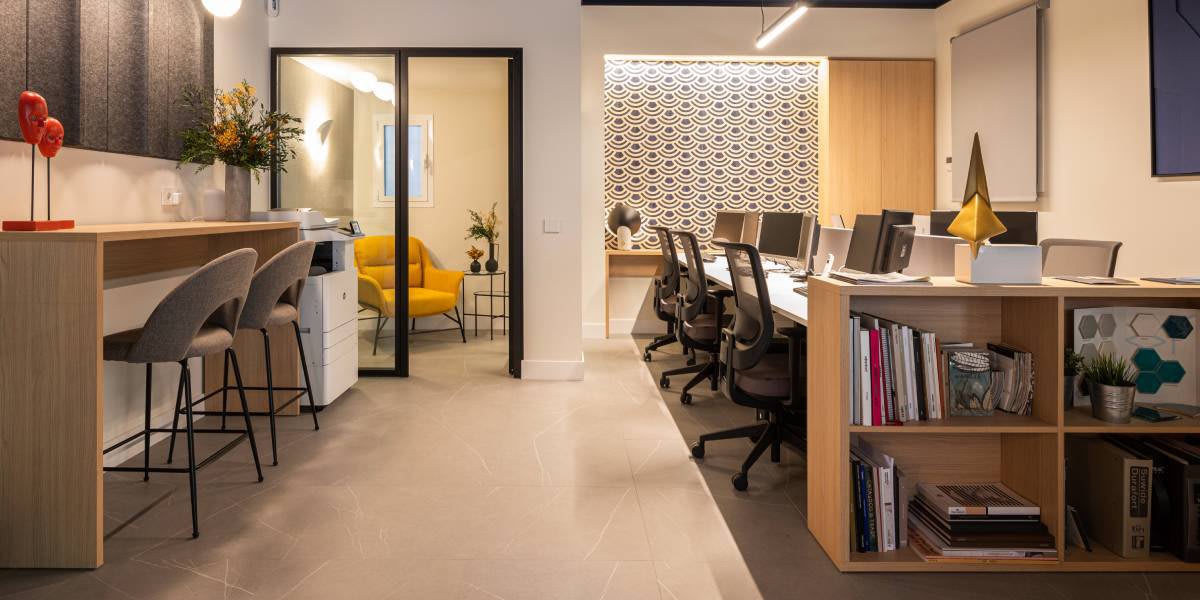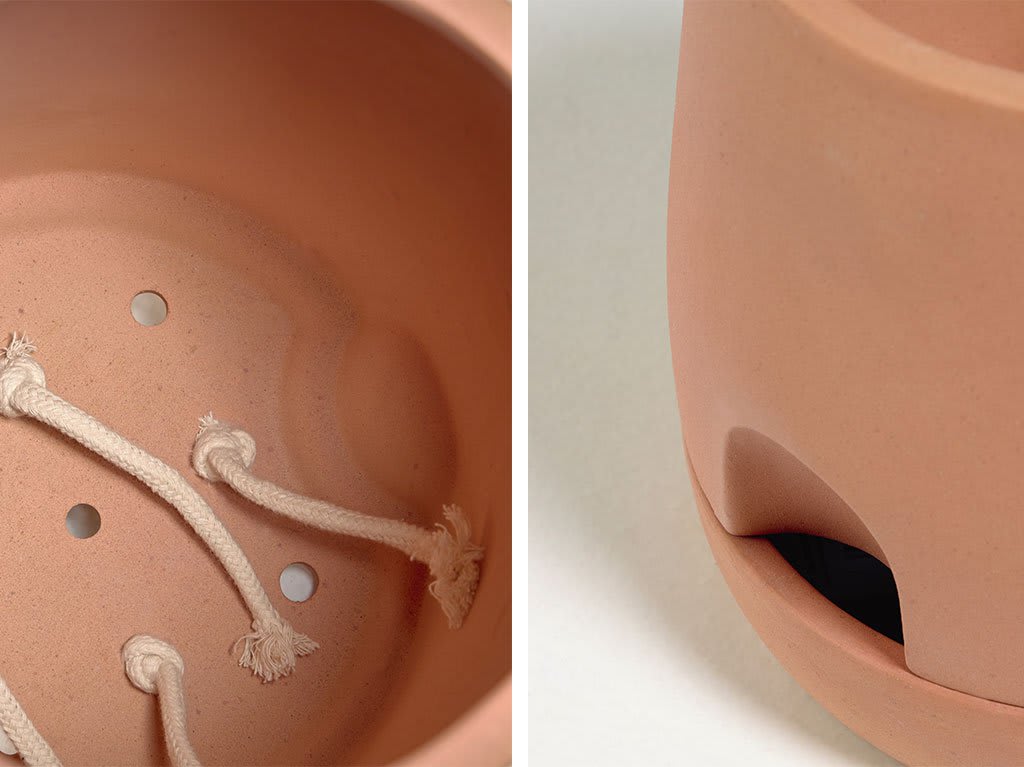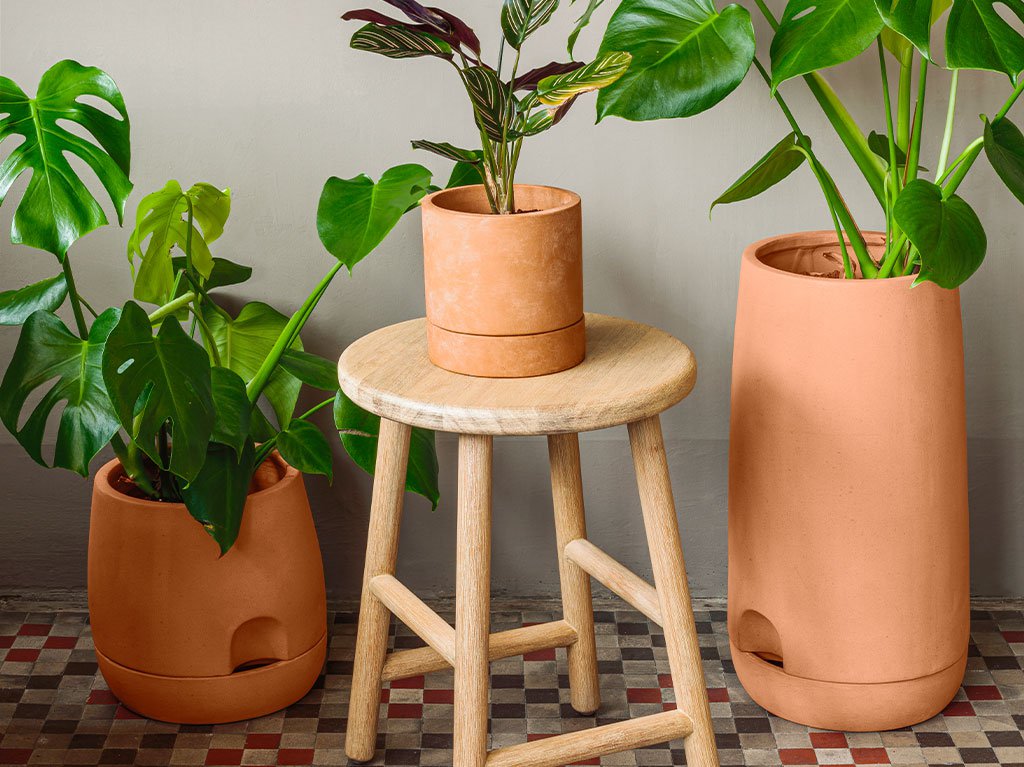
A design-centric office
It happens to us all. We love to fill our home with greenery and then we run out of time to keep the pots watered. With self-watering plant pots, you can go on holiday without asking your next-door neighbour to look after them. Who needs a gardener? Not you!
These pots have a container with a water reservoir system, with a tank connected to a tube that absorbs what the plant needs. This way, you can go about your daily life and make the most of your quality time with your plants. Enjoy them worry-free.
The self-watering system in these plant pots is very simple. All you need to do is fill the tube with soil, leaving a little space for the roots. After potting the plant, you can fill the water tank without it overflowing. And that’s it! Now the plant has enough water for several weeks, or even a month.

You’ll see how the pot comes with an absorbent wick to keep the plant continuously hydrated. It also has a marker so that you can check the level at any time. Keep an eye on it to ensure the plant isn’t either saturated or too dry. Fill the tank whenever necessary and, above all, be observant. The moisture level of the earth and the colour of the leaves are the best indicators of what your plant needs.
As well as giving your plants the best care, this system is the most eco-friendly as it replaces watering cans and hoses, which tend to waste a lot of water. As you can see, your plant pots can be a good friend for the planet and, as a side effect, to your wallet.

Before choosing your self-watering plant pot, you should bear three points in mind, depending on the type of plant you’re going to put in it:
When you purchase a new furniture item, mattress, kitchen, rug or curtain, you pay an eco-participation, which is used to fund the recycling of your old items.
What is eco-participation?
Eco-participation is an additional fee added to the price of new bedding and furniture, paid by the consumer and transferred to Ecomaison.
Why?
It is used to fund the sorting, recycling, and repurposing of old mattresses and furniture.
How does it work?
Ecomaison implements collection and recycling solutions in partnership with local authorities, social economy organizations (such as the Network of Recycling Centers and Emmaus), and furniture professionals.
Since 2013, through this initiative, Ecomaison has already handled over 10 million tons of used furniture and bedding, preventing the landfill of waste equivalent to 1,000 Eiffel Towers. Previously, 55% of discarded furniture ended up in landfills. Ten years later, it's less than 3%. With 800,000 tons per year, Ecomaison is now the leading supplier of recycled wood in France.
Who is Ecomaison?
Ecomaison is a state-approved eco-organization that manages the sorting, collection, reuse, and recycling of household items and materials, from the foundations to the finishing touches. Its mission is to collect and repurpose household items and materials, giving them a second life by donating, repairing, recycling, or using them as an energy source.
Find a collection point on the website ecomaison.com.
Some products are not longer available
If you want to continue please update your basket